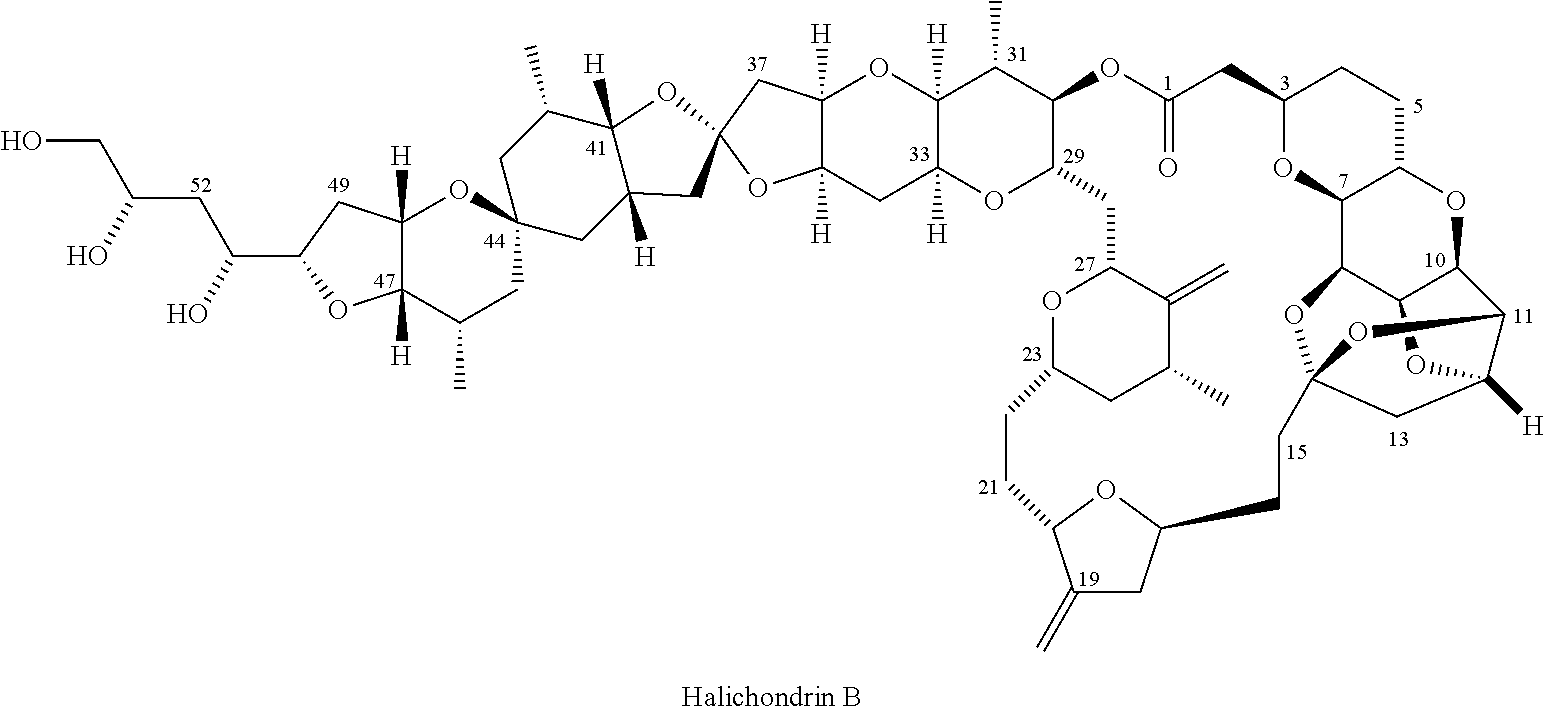Process for preparation of 3-((2s,5s)-4-methylene-5-(3-oxopropyl)tetrahydrofuran-2-yl)propanol derivatives and intermediates useful thereof
a technology of tetrahydrofuran and propanol, which is applied in the field of process for preparing 3((2s, 5s)4methylene5(3oxopropyl) tetrahydrofuran2yl) propanol derivatives and intermediates, which can solve the problems of unfavorable commercial manufacturing and affecting the success of large-scale production
- Summary
- Abstract
- Description
- Claims
- Application Information
AI Technical Summary
Benefits of technology
Problems solved by technology
Method used
Image
Examples
embodiment 8
9. The process , wherein the activator is boron trifluoride.
10. The process according to any one of embodiments 1 to 9, wherein hydrolysis of the compound of formula 5 is performed using a base.
11. The process according to embodiment 10, wherein the base is K2CO3.
12. The process according to any one of embodiments 1 to 11, wherein each R5 and R6 together form an alkanediyl group.
13. The process according to any one of embodiments 1 to 11, wherein each R5 and R6 together form —CH2CH2—.
14. The process according to any one of embodiments 1 to 13, wherein the compound of formula 6 is converted to the compound of formula 7 by oxidizing the alcohol to a ketone, followed by substituting the oxygen by a methylene group.
embodiment 14
15. The process , wherein the oxidation is performed by the Doering oxidation reaction.
16. The process according to embodiment 14 or 15, wherein the substitution reaction is performed by use of Tebbe's reagent.
17. The process according to any one of embodiments 1 to 16, wherein the deprotection of the protected aldehyde to form the compound of formula 7, is performed using an acid.
18. The process according to embodiment 14, wherein the mild acid is pyridinium para-toluene sulfonate (PPTS).
19. The process according to any one of embodiments 1 to 18, wherein the compound of formula 4 is formed from the compound of formula 1
20. The process according to embodiment 19, wherein the compound of formula 4 is obtained by:[0068]converting the hydroxyl group of compound of formula 1 into a leaving group (LG), hydrolyzing the 5,6-isopropylidene protecting group and oxidatively cleaving the diol to form the aldehyde of formula 2;
[0069]reacting the compound of formula 2 with a base to eliminate t...
embodiment 20
21. The process , wherein the leaving group formed is a sulfonate based leaving group.
22. The process according to embodiment 20, wherein the leaving group formed is a mesylate.
23. The process according to any one of embodiments 20 to 22, wherein hydrolysis of the 5,6-isopropylidene protecting group of the compound of formula 1 is performed using an acid.
24. The process according to any one of embodiments 20 to 23, wherein the oxidative cleavage of the diol obtained from the compound of formula 1 is performed by periodate oxidation.
25. The process according to any one of embodiments 20 to 23, wherein the oxidative cleavage of the diol obtained from the compound of formula 1 is performed by sodium periodate.
26. The process according to any one of embodiments 20 to 25, wherein the base for the elimination reaction is NaHCO3.
27. The process according to any one of embodiments 20 to 26, wherein the hydrogenation of the compound of formula 3 is performed using Palladium on carbon catalys...
PUM
 Login to View More
Login to View More Abstract
Description
Claims
Application Information
 Login to View More
Login to View More - R&D
- Intellectual Property
- Life Sciences
- Materials
- Tech Scout
- Unparalleled Data Quality
- Higher Quality Content
- 60% Fewer Hallucinations
Browse by: Latest US Patents, China's latest patents, Technical Efficacy Thesaurus, Application Domain, Technology Topic, Popular Technical Reports.
© 2025 PatSnap. All rights reserved.Legal|Privacy policy|Modern Slavery Act Transparency Statement|Sitemap|About US| Contact US: help@patsnap.com



